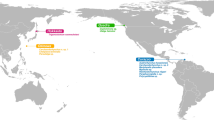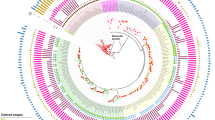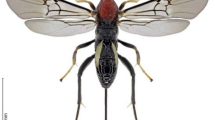Abstract
I HAVE observed a case in which the young of one polychsete annelid, Arabella—probably A. iricolor (Montagu), the cosmopolitan species which is common to the Woods Hole area—parasitizes another polychæte, namely, Diopatra cuprea (Bosc). On August 24, I recovered fifty-three complete worms of the genus Arabella, and the parts of approximately ten others from one adult Diopatra. The segment from which the parasites were recovered was approximately one and a half inches in length. The Arabella ranged in size from small worms of approximately thirty segments without eyes or setse to large worms with four eyes (arranged in the transverse row typical for the genus) and with numerous segments (up to approximately 180), some of which contained setæ. The largest parasite was approximately 5 cm. in length, as compared with the adult Arabella, which ranged in size from 50 cm. to 60 cm. in length1. The larger parasitic Arabella appeared to lie free in the cœlom, whereas the smaller ones were held in place by the small parietal blood vessels in the body-wall of Diopatra.
This is a preview of subscription content, access via your institution
Access options
Subscribe to this journal
Receive 51 print issues and online access
$199.00 per year
only $3.90 per issue
Buy this article
- Purchase on SpringerLink
- Instant access to full article PDF
Prices may be subject to local taxes which are calculated during checkout
Similar content being viewed by others
References
Fauvel, P., “Polychètes Errantes” (Faune de France, 5), 1 (1923).
Smith, Ralph I., J. Morph., 87, 417 (1950).
Author information
Authors and Affiliations
Rights and permissions
About this article
Cite this article
ALLEN, M. An Example of Parasitism among Polychætes. Nature 169, 197 (1952). https://doi.org/10.1038/169197a0
Issue date:
DOI: https://doi.org/10.1038/169197a0



